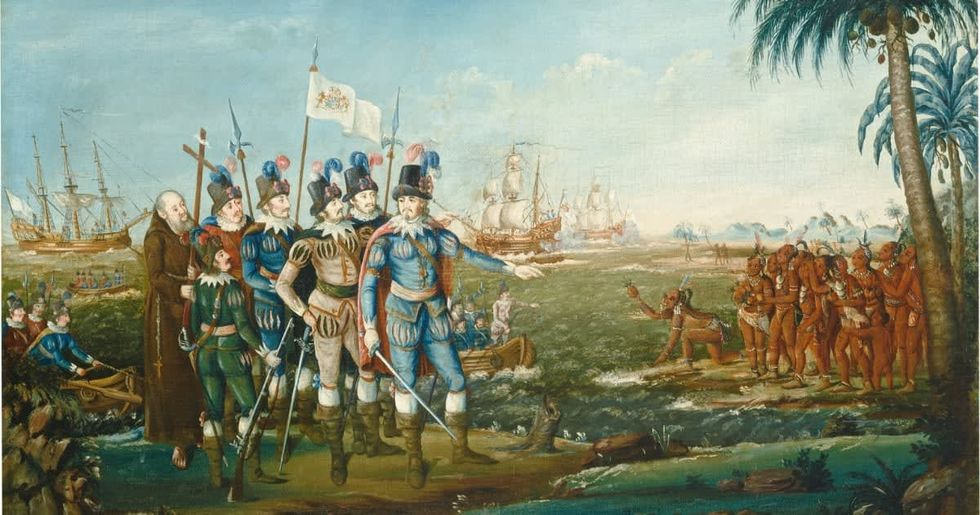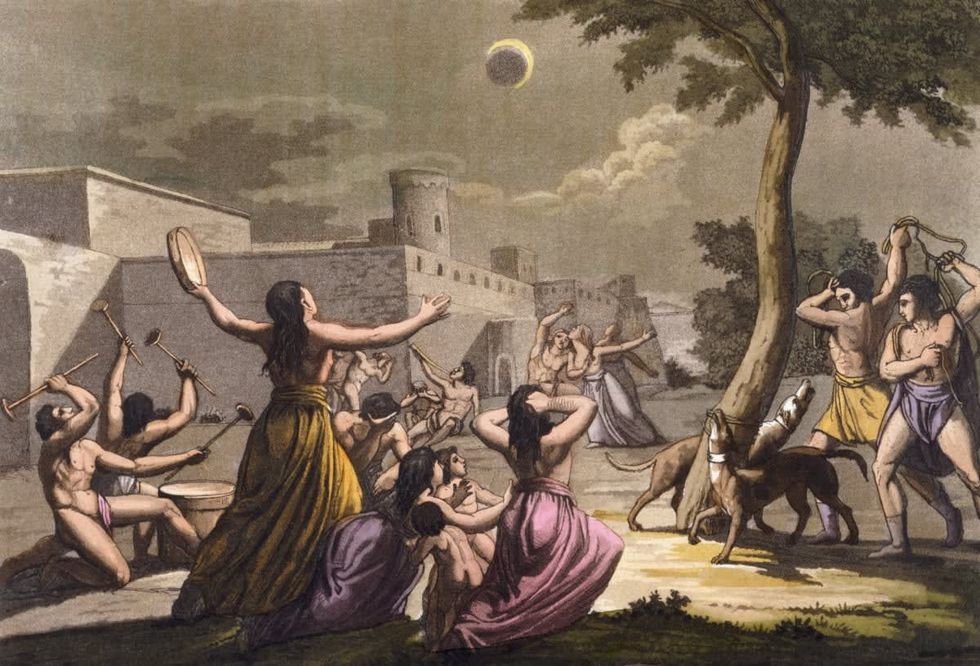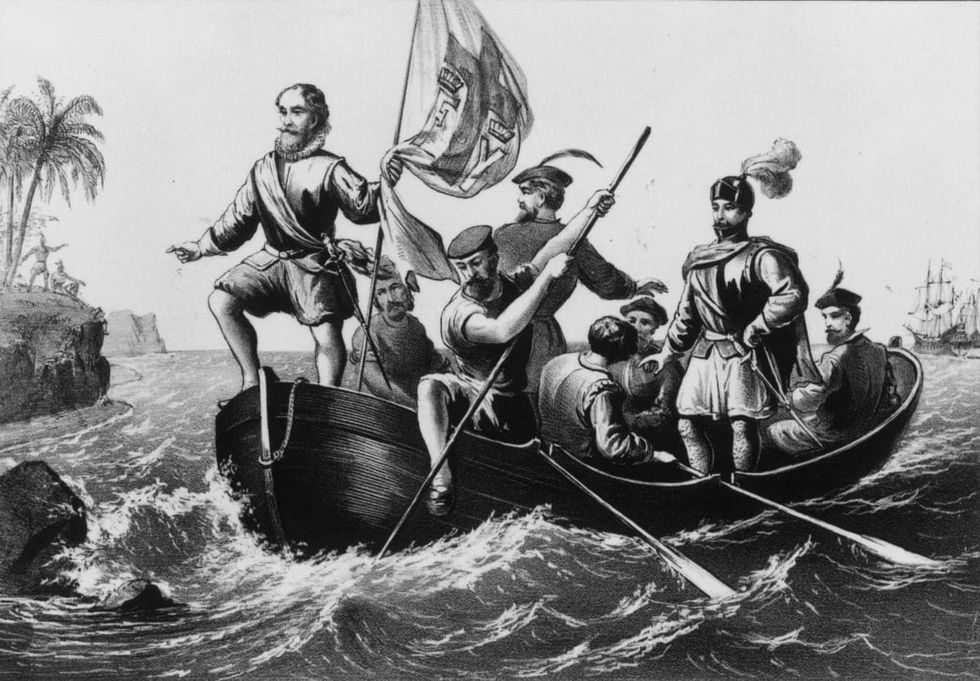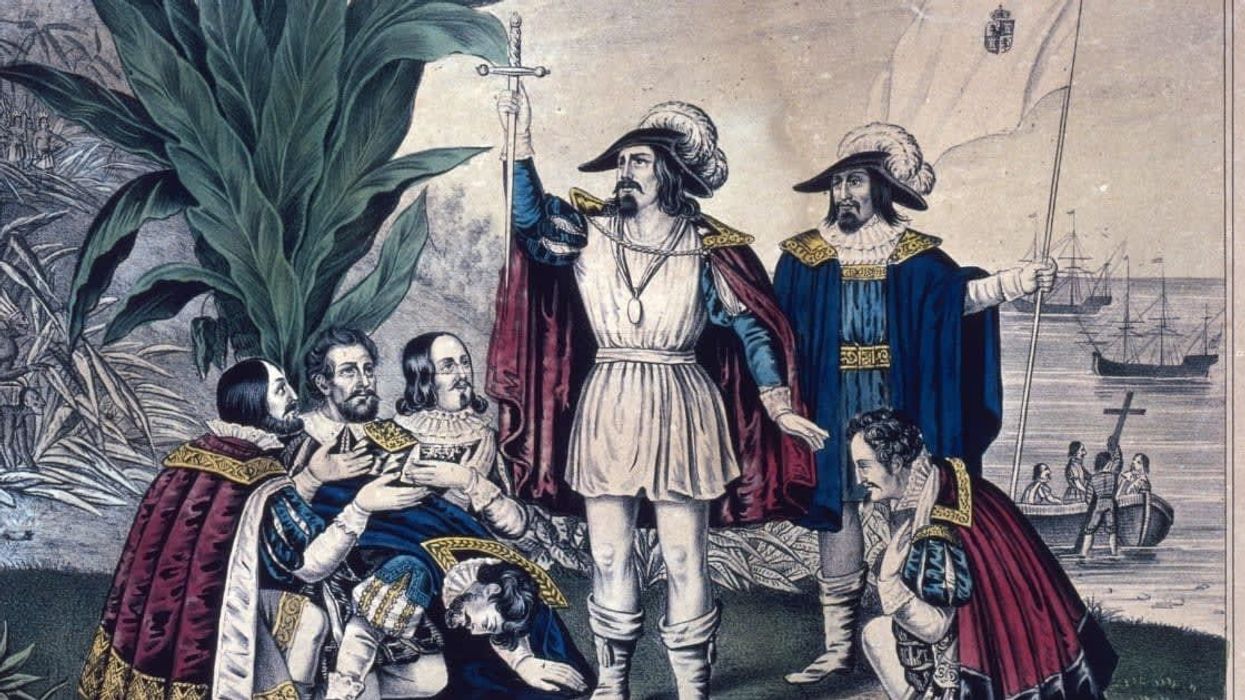Many remember Christopher Columbus for his travel explorations. The Italian-Spanish explorer made four trips across the Atlantic Ocean from 1492 to 1502. However, in his final voyage, his ship got stranded on the island of Jamaica in mid-1503 due to an infestation of marine worms that ate chunks out of their ships. After months of getting royal treatment, Columbus and his crew started facing dissent from the Arawak people. However, Columbus came up with a neat trick that ensured he and his crew were well-fed, according to Space.com.

This amusing story of trickery started when Columbus and his crew took shelter on the island of Jamaica. Thankfully, their initial presence on the island was well-received as the native people supplied their guests with food. Unfortunately, Columbus and his crew overstayed their welcome on the island, which, in return, slowly angered the Arawaks. After spending over six months, the Arawak revolted against the presence of the voyager - slowly cutting food supplies to their traveling guests.
Fortunately for Columbus, all European sailors at the time used to carry an almanac containing astronomical tables for the period between 1475 and 1506. The almanac provided all the updates on the movements of the Sun, Moon, and other stars. Compiled by the great German mathematician, Johannes Müller von Königsberg, the almanac provided the details about an eminent total lunar eclipse on February 29, 1504.

What Columbus did next was simply brilliant as he cleverly approached the Arawak chief and conveyed that his Christian god had become angry at the locals’ unwillingness to feed their guests, and would show a sign of his displeasure soon. For Columbus, February 29 turned out to be a life-saving day as it saw a total lunar eclipse covering the island. Gripped by old beliefs and superstitions, the Arawak chief took the eclipse as a sign from God and apologized dearly to Columbus. He promised to satisfy the Christian god by providing good hospitality to Columbus and his crew.
After tricking the Arawak chief into getting them food and necessary supplies, Columbus and his crew waited for their rescue ship, which arrived in June 1504. This was Columbus's last voyage and after two years, he passed away in 1506 due to heart failure, as reported by History Today. Columbus may not have been the first man to have set foot on the American continent, but his exploration marked the beginning of the colonization of North and South America.


















 A symbol for organ donation.Image via
A symbol for organ donation.Image via  A line of people.Image via
A line of people.Image via  "You get a second chance."
"You get a second chance." 


 36 is the magic number.
36 is the magic number. According to one respondendant things "feel more in place".
According to one respondendant things "feel more in place". 
 Some plastic containers.Representational Image Source: Pexels I Photo by Nataliya Vaitkevich
Some plastic containers.Representational Image Source: Pexels I Photo by Nataliya Vaitkevich Man with a plastic container.Representative Image Source: Pexels | Kampus Production
Man with a plastic container.Representative Image Source: Pexels | Kampus Production
 Photo by
Photo by 
 Canva
Canva It's easy to let little things go undone. Canva
It's easy to let little things go undone. Canva
 Teens are waiting longer than at any point in the survey’s history. Canva
Teens are waiting longer than at any point in the survey’s history. Canva Chart on the age of a person’s first time having sex.National Survey of Family Growth/flowing data.com | Chart on the age of a person’s first time having sex.
Chart on the age of a person’s first time having sex.National Survey of Family Growth/flowing data.com | Chart on the age of a person’s first time having sex.